HEALTHY GUMS = OVERALL HEALTH!
Noll Family Dentistry is committed to not only making sure your teeth are healthy, but also your gums. Carlisle dentist, William Noll, DMD, and his team of dental professionals want to help you understand gum disease, its signs & symptoms, and ways to prevent and treat it to ensure your oral and overall health.
Whether you are a current patient or a new patient who has gum health concerns, understanding gum disease is the first step to healthy gums, which is important to whole-body health.
WHAT IS GUM DISEASE?
Also called periodontal disease is an infection within your gum tissue, supporting ligaments, and jawbone. This infection is caused by harmful bacteria that are present in plaque, a soft and sticky substance on our teeth that forms daily. Generally, two stages of gum disease exist, gingivitis and periodontitis:
Gingivitis: the first and earliest stage of gum disease that is an inflammation of your gum tissue caused by harmful bacteria present under your gums. With simple, additional attention to your mouth and gums, inflammation can be reduced, and gum condition improved because the gingivitis stage does not cause permanent damage to gum tissue, ligaments, and bone support.
Periodontitis: The second and more harmful type of gum infection in which harmful bacteria cause damage to the tissues and bone that are supporting your teeth. Without proper treatment, periodontitis can advance to a more severe gum infection that continues to destroy your gums
and jawbone that support your teeth. Without support, your teeth can shift, loosen, and eventually need to be removed.
Without professional care, this disease can worsen and cause gum and bone loss that can lead not only to tooth loss but can also affect your overall health.
WHAT CAUSES GUM DISEASE?
Although bacteria cause gum disease, the gum infection that is called periodontitis, other health and lifestyle factors may exist that can worsen the disease progression. Those risk factors are categorized as either primary or secondary risk factors.
Primary risk factors may include genetics, health issues such as diabetes, tobacco use, and poor homecare. Secondary risk factors may include long intervals between dental cleanings, certain medications that can affect your mouth, hormonal changes, and stress.
Your teeth themselves may also be part of the problem if you have misaligned or missing teeth, grind or clench your teeth, or have obstacles to brushing like large fillings or braces.
Identifying risk factors is one of the first steps in establishing the best therapies to treat your disease.
HOW CAN GUM DISEASE AFFECT MY HEALTH?
The American Academy of Periodontology has shown a link between gum disease and common health issues such as heart disease, diabetes, Alzheimer’s disease, respiratory problems, certain types of cancer, osteoporosis, and pregnancy complications. Most recently, some information suggests a link between poor oral health and Covid-19
complications!
WHAT ARE THE SIGNS OF GUM DISEASE?
Some common symptoms include:
- Gums that bleed when brushing or flossing
- Gums that appear red, puffy, or are tender
- Bad breath or a persistent bad taste in your mouth
- Gums that appear receded or look pulled away from your teeth
- Teeth that feel loose or shifted
- Changes in the way your teeth fit together
- Changes in the way your partials or other dental work fits
HOW DO I KNOW IF I HAVE GUM DISEASE?
Although you may not have some of the common signs and symptoms, you may still be at risk. In the early stages, gum disease can be a silent infection that comes with little symptoms but can cause potentially big problems.
As dental professionals, Dr. Noll and his staff are here to help their patients not only have healthy teeth but also healthy gums. The first step to determining gum health is by having a periodontal screening at your cleaning appointment.
At your appointment, your dental hygienist will first perform the screening by assessing your gums visually and by taking measurements of the space between your tooth and gum, called a periodontal (gum) pocket. In a healthy mouth, that space is small, less than 3mm. If those measurements are more than 3mm and accompanied by visual signs such as inflammation,
bleeding, redness, or sensitivity during the assessment, your hygienist will communicate that to your dentist upon your examination.
During your examination, Dr. Noll will not only review the data that your hygienist has collected but will also review your risk factors and check the way your teeth align and bit together.
If Dr. Noll determines that you have any level of gum disease, he and his dental team will discuss treatment options, which may include oral homecare modifications, more frequent cleanings, or a referral to a periodontist, who is specializes in treating gum and periodontal disease.
WE ARE COMMITTED TO YOUR HEALTH!
Here at Noll Family Dentistry in Carlisle, we are committed to preventing your oral health and prevention of these issues through professional dental cleanings, routine gum assessments, and oral health education.
We also want to help our patients who have been diagnosed with periodontal disease understand what it is, why and how gum disease should be treated, and how we can work together toward improving your oral health.


